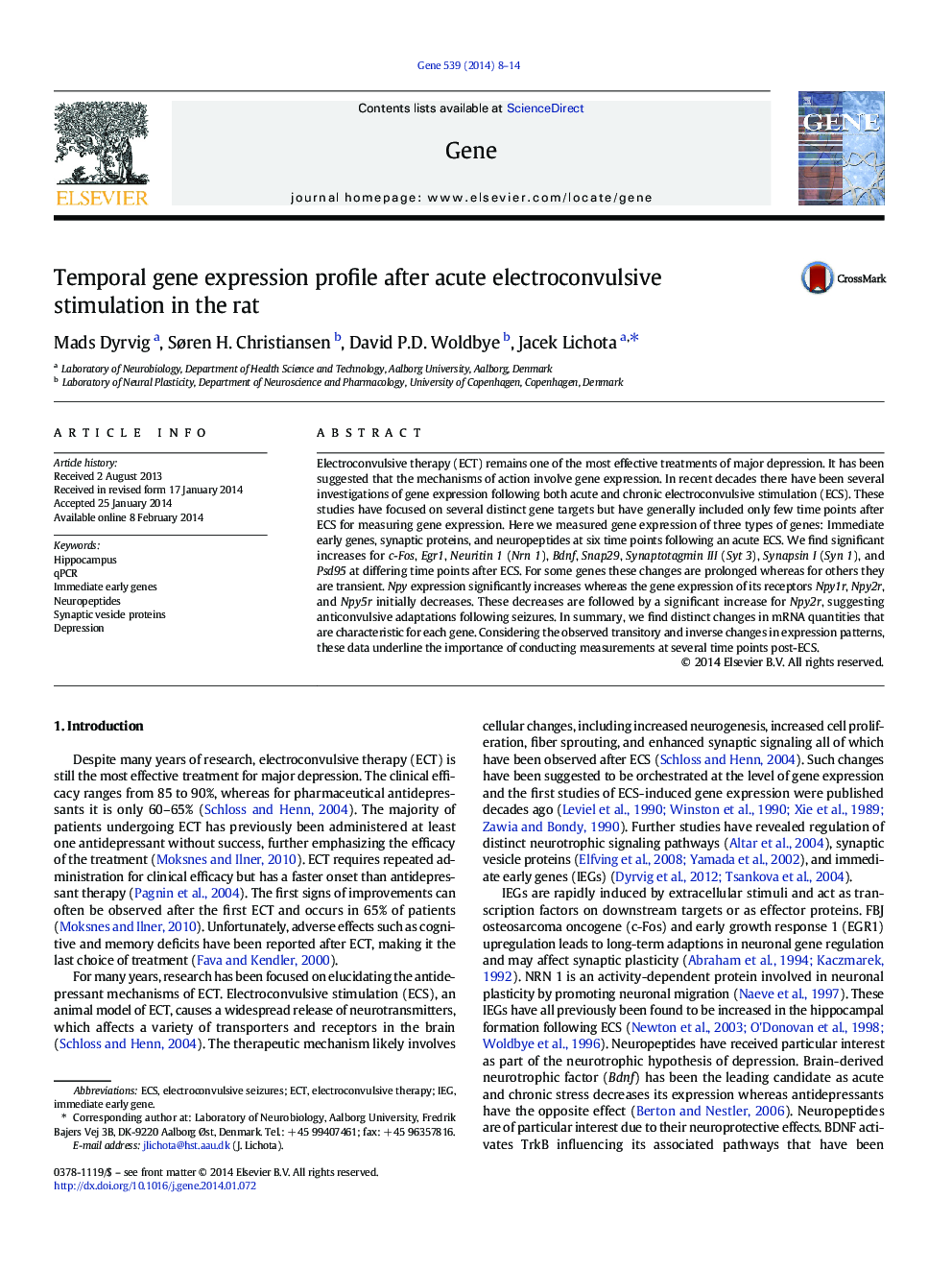| Article ID | Journal | Published Year | Pages | File Type |
|---|---|---|---|---|
| 5905820 | Gene | 2014 | 7 Pages |
â¢We analyzed gene expression after a single ECS in rat.â¢Different temporal expression patterns were observed.â¢Several time points are necessary to interpret effects of ECS.
Electroconvulsive therapy (ECT) remains one of the most effective treatments of major depression. It has been suggested that the mechanisms of action involve gene expression. In recent decades there have been several investigations of gene expression following both acute and chronic electroconvulsive stimulation (ECS). These studies have focused on several distinct gene targets but have generally included only few time points after ECS for measuring gene expression. Here we measured gene expression of three types of genes: Immediate early genes, synaptic proteins, and neuropeptides at six time points following an acute ECS. We find significant increases for c-Fos, Egr1, Neuritin 1 (Nrn 1), Bdnf, Snap29, Synaptotagmin III (Syt 3), Synapsin I (Syn 1), and Psd95 at differing time points after ECS. For some genes these changes are prolonged whereas for others they are transient. Npy expression significantly increases whereas the gene expression of its receptors Npy1r, Npy2r, and Npy5r initially decreases. These decreases are followed by a significant increase for Npy2r, suggesting anticonvulsive adaptations following seizures. In summary, we find distinct changes in mRNA quantities that are characteristic for each gene. Considering the observed transitory and inverse changes in expression patterns, these data underline the importance of conducting measurements at several time points post-ECS.
